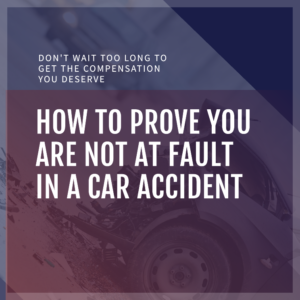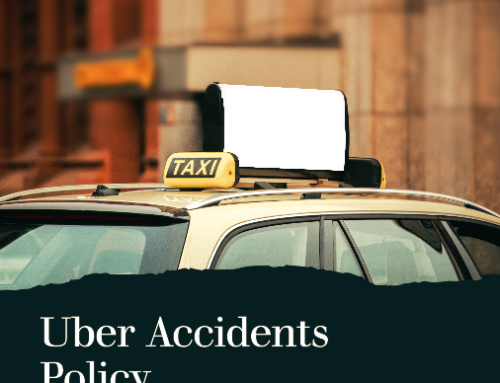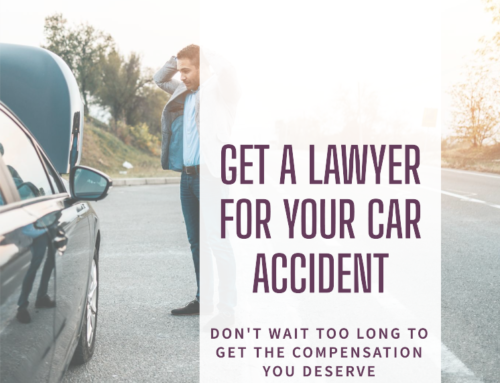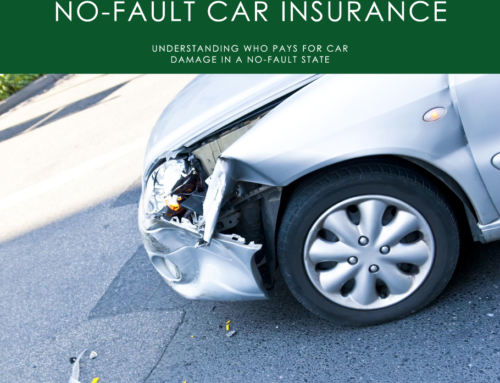
Accidents are unfortunate on our roads, and establishing who is at fault is crucial for insurance and legal purposes. If you are involved in an automobile collision, knowing how to prove you are not at fault can spell the difference between a compensation payment and a financial burden. This article will dissect the intricate process, providing practical insights into proving your innocence in a car accident. From language applicable to the law, effective engagement with professionals, and meaningful ways of gathering evidence, this guide ensures you are equipped with practical strategies to absolve yourself from a fault.
Table of content
- Understanding the Basics of Fault in Car Accidents
- Engage a Professional Car Accident Lawyer
- Gathering Crucial Evidence at the Accident Scene
- The Importance of a Police Report
- Using Medical Records as Evidence
- Expert Witnesses and Their Roles in Proving Non-Fault
- Importance of Traffic Cameras and Electronic Devices
- Unraveling the Complexities of Rear-End and Left-Turn Accidents
- Comparative Negligence: Understanding Shared Fault
- Importance of Post-Accident Follow-Ups
Understanding the Basics of Fault in Car Accidents
Car accidents are chaotic and harrowing events that present many challenges, especially when determining fault. Establishing who is responsible for a car accident is critical in the ensuing legal and insurance procedures. It establishes who has to bear financial responsibility for damages and medical bills. In many jurisdictions, this falls under the purview of the at-fault driver’s insurance company. Therefore, if you believe you are not at fault in a car accident, it’s imperative to gather as much evidence as possible to support your stance, or else you might end up bearing the brunt of the damages.
The procedures and laws related to determining fault vary across jurisdictions. Understanding these laws is critical in knowing how to handle the insurance claim. Some states practice ‘no fault’ laws, where each driver’s insurance takes care of their losses irrespective of who caused the accident. In ‘at fault’ and ‘modified comparative negligence’ states, the driver who caused the accident bears the burden, and it’s where proving you are not at fault becomes highly critical.
Engage a Professional Car Accident Lawyer
After an accident, the immediate priority should be seeking medical attention. Once everyone involved is safe and health concerns addressed, engaging a car accident lawyer or a personal injury attorney can be a pivotal step in proving you are not at fault. These professionals have years of experience dealing with car crash cases and have the much-needed expertise in collecting vital evidence, negotiating with insurance companies, managing legal procedures, and ensuring fair compensation.
A seasoned car accident attorney will assess the accident scene, investigate essential elements like skid marks and vehicle debris, scrutinize the official police report, and gather eyewitness statements. They can also help file claims with the at-fault driver’s insurer, helping you sidestep potential pitfalls that could undermine your claim. They understand the nuances of traffic laws, negligence rules, and varying requirements of different jurisdictions, which can be decisive in your case outcome.
Lawyers can also help dispute claims if the other driver’s insurance company denies your claim or misrepresents the accident facts. They shed light on your legal options and guide you in filing a car accident lawsuit if necessary. Moreover, it is often in such stressful situations that the value of a free consultation or case review from a law firm becomes apparent. A professional guiding hand is crucial in navigating the intricate maze of car accident claims.
Gathering Crucial Evidence at the Accident Scene
If you’re not significantly injured and can do so, gathering evidence at the accident scene can significantly strengthen your case and help you prove that the other driver was at fault. You can start by taking pictures of the accident scene to show vehicle positions, visible damages, and other relevant aspects like road signs, traffic lights, and road conditions—the more detailed your picture collection, the less room for doubt when determining responsibility.
Remember to exchange contact and insurance information with the other driver, which will be needed when making an insurance claim. As you do this, remain meticulous in collecting as many details as possible, such as the license plate number, car make, and model. Additionally, ensure to get the contact information of any witnesses at the scene. Their accounts of what happened can be instrumental in solidifying your stance.
Observing and documenting even less significant details, such as weather conditions, the time of day, and any apparent traffic violations, can prove incredibly critical. Comb through the scene to see if traffic or surveillance cameras from nearby buildings could have recorded the accident. Here’s where your attorney, specializing in car accident cases, can immensely help access and interpret such footage.
The Importance of a Police Report
When a car accident happens, a responding police officer is typically one of the first on the scene. Their role is integral to determining how the car accident occurred, the parties involved, and which driver caused the incident. They document these details in an official police report, a critical piece of evidence proving that you are not at fault in car accidents.
When you interact with the police officer, provide an accurate account of what happened clearly and concisely. Cooperating with the police officer can make it easier for them to create a precise accident report. Wait for the police report to be completed and always obtain a copy. The details in the report, including the police officer’s expert opinion on the incident, can significantly aid your cause.
Remember, the police report could include information on traffic law violations made by the other driver, citations given, and a diagram of the accident scene. An expert car accident attorney can spot the minute details in a police report that can tip the scales in your favor. A police report, backed by the credibility of the law enforcement officer, is often recognized and valued by insurance companies in determining fault, enhancing its significance in highlighting other drivers’ negligence.
Using Medical Records as Evidence
Medical records serve dual purposes in a car accident case – they document your injuries and emphasize the accident’s seriousness. If you believe the other driver is at fault, your medical bills will imply the accident’s severity, indirectly pointing toward the other party’s fault.
Immediately after the car accident, seek medical attention even if you feel fine. Some injuries may not be immediately apparent, and having a medical professional evaluate your condition is valuable. Ensure you properly maintain and organize all your medical records, receipts, and prescriptions. This will aid in recovering compensation from the at-fault driver’s insurance company.
A car accident attorney can assist you in understanding how medical records tie into your claim. They understand how to appropriately calculate, present, and argue your personal injury case regarding medical bills and suffering, including lost wages. The precise documentation of your injuries and necessary medical treatment reinforces your case about the incident’s severity, contributing to validating your lack of fault.
Expert Witnesses and Their Roles in Proving Non-Fault
Expert witnesses play a considerable role in car accident cases. These professionals usually specialize in fields related to crash reconstruction, medical treatment, and economic impacts. They provide an expert analysis of how the car accident happened, the injuries suffered, lost income, and potential future financial losses.
Crash or accident reconstruction experts analyze different data – police reports, photographs of the accident scene, vehicle damage, skid marks on the road, traffic camera footage, black box data, and witness statements. Their role is to recreate the accident scenario, providing an unbiased perspective that can help prove the other party’s fault.
Medical experts are another type of professional witness that can be engaged. They delve deeper into your medical records and validate the extent of your injuries, relating them directly to the accident. The economic experts help quantify economic damages such as lost wages and potential future earnings. An experienced law firm handling auto accidents will have a network of expert witnesses whose testimony can significantly reinforce your claim.
Importance of Traffic Cameras and Electronic Devices
Traffic cameras and car electronic devices often provide impartial insight into how the accident occurred. They can unequivocally show which car was at the location first, how fast they were going, and other vital details, such as traffic light phases, which can prove liability in your car accident case.
If an accident happens at a major intersection, there’s a high probability that a traffic camera recorded it. Similarly, surveillance cameras at nearby buildings might have also captured crucial details about the accident. Besides, many vehicles come equipped with devices like dash cams and black boxes that record detailed information about speed, braking, and other factors about the vehicles involved.
Unraveling the Complexities of Rear-End and Left-Turn Accidents
In most car accident cases, rear drivers are often presumed at fault in rear-end collisions. The logic stems from the idea that the rear driver should maintain a safe following distance. However, there are circumstances where the front driver might share some blame—for example, if their brake lights were not working.
In contrast, drivers turning left are mostly considered at fault in accidents. However, just as in rear-end collisions, exceptions exist. If the oncoming car was speeding or ran a red light when you were making a left turn, they might be entirely or partially at fault.
In these scenarios, having a proficient car accident lawyer becomes invaluable. Their expertise helps decipher and clarify those specific traffic laws in your case, eventually proving that you are not at fault even in complicated situations like rear-end or left-turn accidents.
Comparative Negligence: Understanding Shared Fault
The concept of shared fault applies in certain states, known as ‘comparative’ or ‘modified comparative negligence’ states. It means that even if you were partially at fault in the accident, you could still recover compensation proportionate to the other party’s fault. Establishing minimum fault is crucial to maximizing your rightful compensation, even in these situations.
The car accident lawyer plays a crucial role in these cases. They gather and present evidence to minimize your comparative negligence percentage and maximize the other driver’s blame percentage. Understanding and exploiting these rules to your advantage is vital when you suffer injuries in a car accident.
Importance of Post-Accident Follow-Ups
The period following the accident is crucial for your car accident claim. It involves many facets, such as coping with insurance companies, documenting medical treatments, managing vehicle repairs, and filing for lost wages. Each aspect impacts your capacity to prove non-fault.
Your attorney also comprehensively looks into various aspects, like whether the other driver admits fault at the accident scene or if they were involved in any traffic violations. They also deal with your and the other party’s insurance companies, including when an insurance company denies a claim, leading to a car accident lawsuit if necessary.
Untimely reporting, inadequate documentation, missed medical appointments, or even an off-guard statement could weaken your claim. For this reason, having a knowledgeable car accident attorney to navigate these processes, right from a free initial consultation to a successful resolution of your legal matter, is essential.
By following these tips, you can build a compelling case to prove you are not at fault in a car accident and ensure you receive the compensation you deserve. Remember, regardless of your involvement in a car accident, a specialized legal professional by your side ensures your rights are protected and your claims are efficiently addressed.
Conclusion
Understanding the dynamics of proving your innocence in a car crash can be complex and overwhelming. It involves many steps, from carefully gathering evidence at the accident scene, hiring a competent car accident lawyer, and obtaining a comprehensive police report, to understanding the critical role of expert witnesses, among other factors. Every car accident case has unique circumstances, so strategies must be tailored to suit specific situations. Therefore, while this guide provides a broad overview of what to consider, professional advice from an experienced car accident lawyer ensures a personalized approach, meticulously addressing your unique case and helping you prove you’re not at fault in a car accident.






Leave A Comment